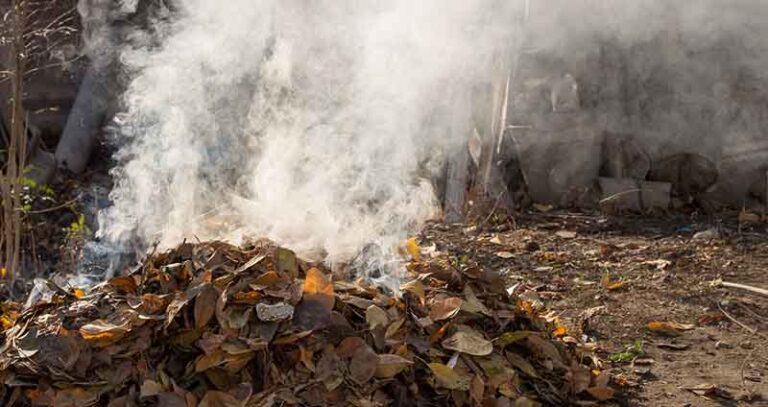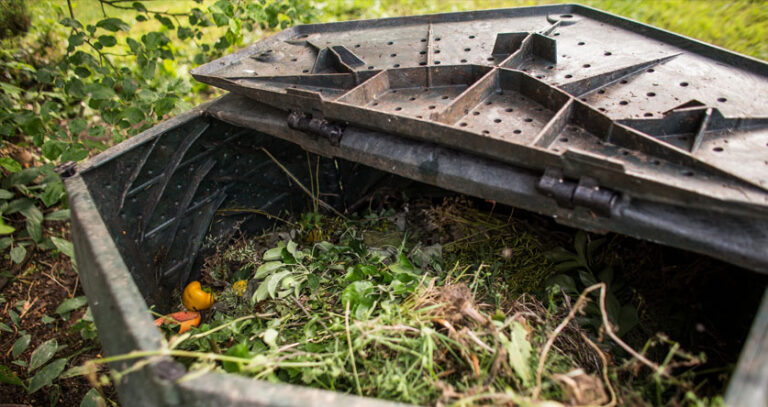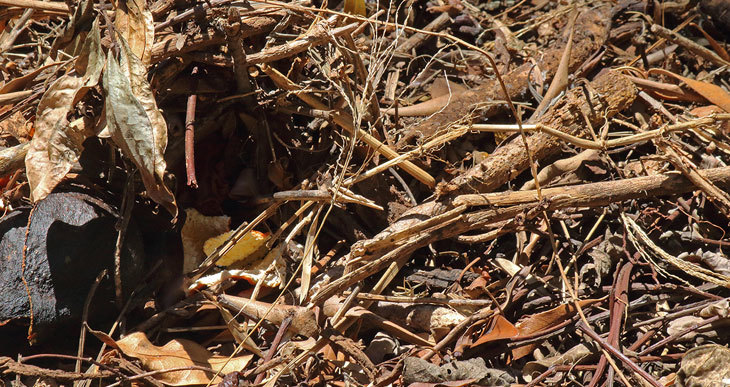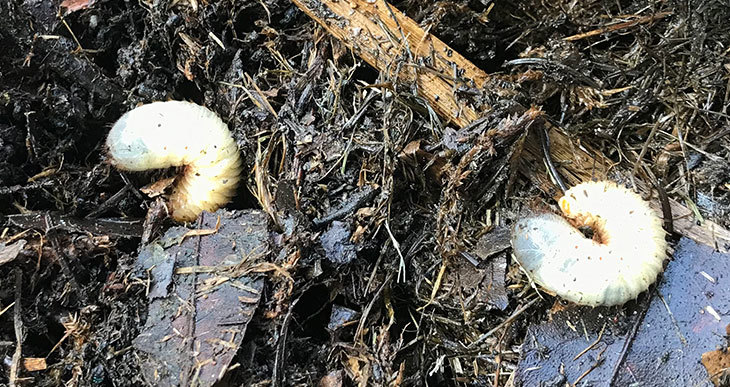Compost Dusty (And What To Do About It!)
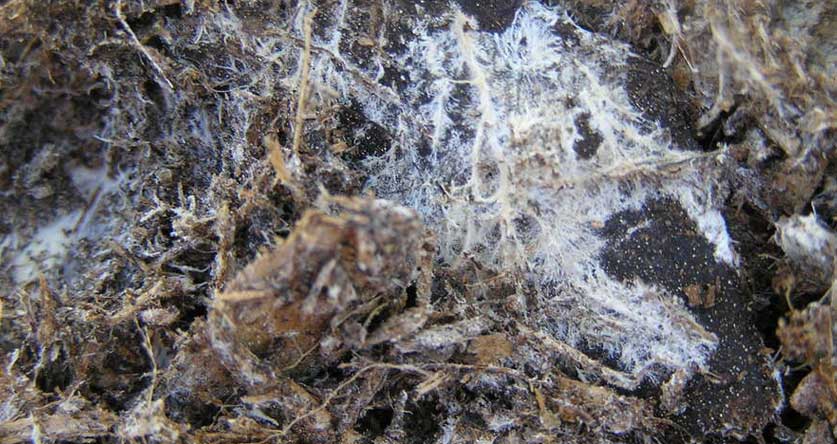
So your compost is not looking normal and appears dusty, or white patches materialize. And now you’re wondering if something is wrong.
Or maybe your composting process is having problems?!
Below, I’ll offer valuable insight into what might be happening with your compost!
Dusty Compost
Dusty compost is usually a symptom of a lack of moisture. If caught early enough, the compost can be saved by adding water to raise dampness levels. White, gray, and ash-like content in the compost is generally fungi and mold that are beneficial to the decomposition process.
Dusty-looking compost or gray, ashy, or white-colored spots in your composting materials are symptoms of various conditions.
Some are nothing to worry about, while others require attention if you want to save your compost and keep it suitable for feeding your plants.
Below I’ve put together a few common questions people ask when their compost doesn’t look normal and if any action needs to be taken.
Why Is My Compost Dusty?
Suppose your compost looks generally dusty and powdery. In that case, a common cause is insufficient moisture content in the compost, which is starting to dry out.
When compost dries out, the fine particles no longer clump together, and the compost becomes dry and dusty.
If it’s left to dry out completely, the beneficial microbes, bacteria, and fungi will die off, and your compost will lose quality.
If the outside of the compost is becoming dusty, but the center of the pile is still moist, then you may be able to save it.
- Wet the compost down and cover it with a plastic sheet or tarp for a few days.
- Then, check the compost daily and add more moisture as needed.
If the pile is dry all the way through, the best use for the material is to add it to another fresh compost pile as a brown ingredient.
My Compost Has Gray, Dry, Dusty Patches
Gray, dusty-looking patches on the compost surface are nothing to worry about. This is just the normal progression of some organic material’s decomposition.
These patches are fungi growing on the surface of the organic material. Turning the compost and mixing the fungus into the pile is all that is required.
Remember, fungi are beneficial to the quality of the finished compost.
The Middle Of The Compost Pile Is Gray, And Dusty
If the middle of your compost pile appears gray and dusty, there are three possible causes.
First, if you are hot composting, it is certainly possible that some of the organic material in the center of the pile has reached high enough temperatures to smolder.
- This can create an ashy, gray, and dusty material in the center of the compost pile since some of the organic material has been charred enough to turn to ash.
- Another cause is mold or fungi developing in compost, the middle of the pile, which simply needs to be turned to distribute the microbes throughout the organic material.
- The final cause is that the compost pile has been neglected and has dried out completely. This will result in the compost losing moisture and structure and will appear gray and dusty in the center.
Why Does My Compost Look Ashy?
An ashy layer developing on top of your compost pile is nothing to worry about. However, many people new to composting think that this indicates that the compost has become too hot and the organic material has burned to ash.
This is not the case if the ashy layer is on top of your compost. This layer is a type of fungus that has begun to grow on the upper surfaces of the rotting materials. It looks very similar to ash, and many beginner composters make this mistake.
You can safely leave this fungus alone. It will mix and distribute into the compost when you turn the pile.
What Is The White Ashy Material In Compost?
A healthy compost pile will develop fungus growth of varying colors. For example, white fungus growing in compost can have an ashy look, but it is nothing to be concerned about.
White fungus on decomposing waste is a good sign that the compost is healthy and breaking down as it should.
When you turn your compost, the fungus will be distributed throughout the pile and will continue to do its work.
Why Is My Compost Going White?
Compost can turn white when mold and fungi are present during decomposition. Mold and fungi are part of the standard decomposition of organic material. Therefore, they are generally not a problem unless the fungi increase to the extent of becoming problematic. This typically only occurs if the compost pile is not turned frequently.
Suppose you see white spots or a white layer developing on your compost. In that case, you must turn it to distribute the fungi and mold evenly throughout the mixture!
Conclusion
So dusty-looking compost is mostly due to mold and fungi
While these organisms are helpful for the compost, they can harbor health issues for unwary gardeners. Always wear gloves, closed shoes, and a dust mask to avoid inhaling fungal and mold spores when working with compost.
Keep in mind some discolorations or dustiness are caused by a lack of moisture in the compost.


